Growing garden blueberries in the Moscow region
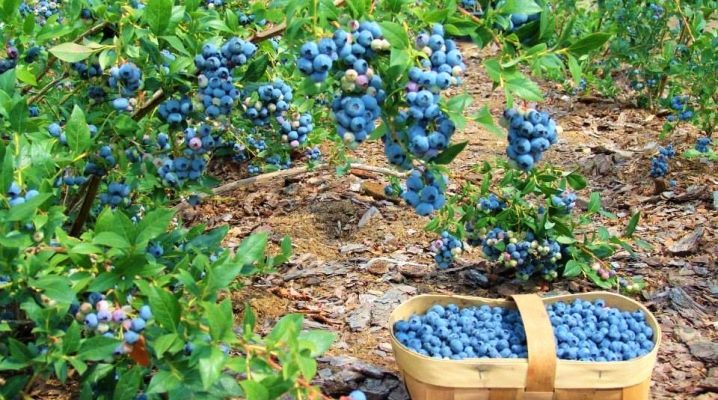
Deciduous shrub with deep blue berries is increasingly found in garden plots in central Russia. From a wild berry, blueberries become a delicacy that many amateur gardeners grow on their plots. In recent years, many varieties of cultural selection have appeared, which feel great in the temperate and cool climate of the Moscow region.
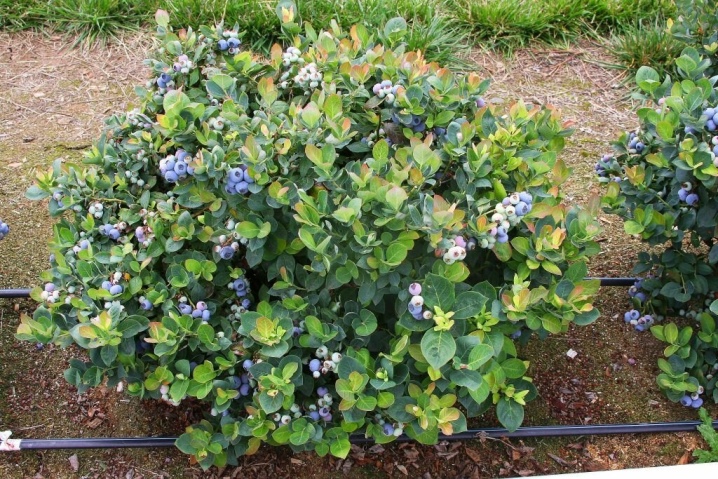
Plants take root well in gardens and give abundant harvests of sweet, but low-calorie berries with a pleasant, delicate taste.
Suitable varieties
Wild blueberries grow everywhere in the vast territory of Eurasia, on the mainland of North America, Iceland and Japan. The shrub prefers places far enough from industrial civilization and megacities. Varieties of culture differ in terms of entry into fruiting, the size of the bush, yield and fruit taste. Unpretentiousness, resistance to frost and diseases, which also differ in different varieties of blueberries, are of great importance for gardeners.
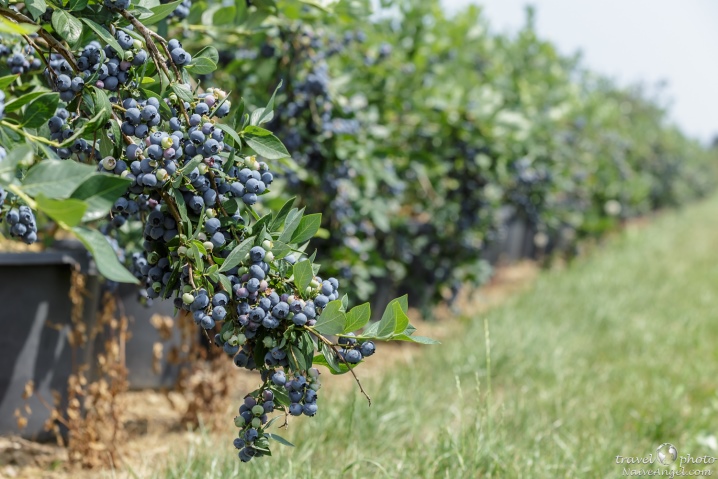
Among the most popular varieties of garden blueberries in the Moscow region, you can pay attention to "Elliot", "Blurei", "Bonus", "Elizabeth", "Aurora", "Toro", "Spartan", "Flamingo" and "Duke". When buying and choosing garden varieties, amateur gardeners should contact large nurseries specializing in the cultivation of rare plants that have proven themselves well in the seedling market.
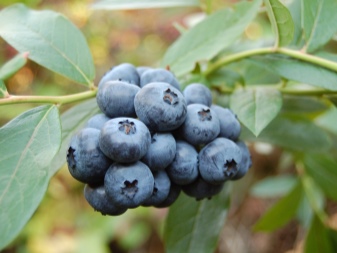

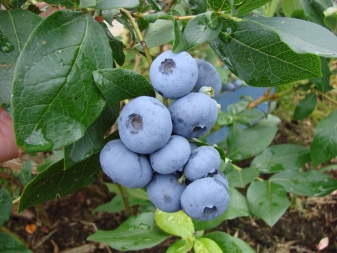

The widespread distribution of blueberries in the gardens of the Moscow Region is at an early stage, so the best varietal seedlings are rare.
The demand for healthy and tasty berries is constantly growing, and more and more owners of garden plots want to see this tasty and very healthy product at their dachas, which is also suitable for dietary nutrition. Everyone can choose the variety that is most suitable in terms of ripening and other characteristics.
- "Elizabeth" Is a self-pollinating hybrid that, in the presence of other varieties for additional pollination, shows greater productivity. Differs in resistance to many diseases, including late blight and root rot. It tolerates winter frosts down to -30 degrees, but develops poorly on sandy soils, preferring peat bogs. The berries are large, light blue in color, with a pleasant aroma, but too tender for long-term storage.

- "Blukrop" - the bushes of this standard variety for the middle lane grow up to 1.5-2 meters. The mid-season variety is famous for its excellent adaptation to any conditions and is resistant to severe frosts down to -30-35 degrees. Drought tolerance, on the other hand, is lagging behind on wet soils. Young shoots sometimes get sick and require pruning. The yield is very high, not only because of the number of berries, but also because of their size - up to 2 cm in diameter. The taste of light blue fruits is remembered for its excellent aroma and light astringency.
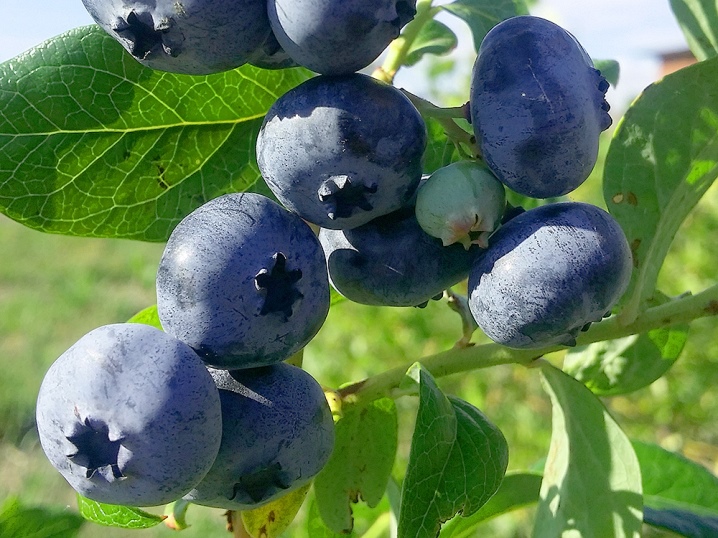
- "Duke" - mid-early and vigorous variety, the bushes of which grow up to 1.5-1.8 meters and form many lateral shoots. The shrub begins to bloom late, which guarantees the safety of the ovaries formed after the threat of spring frosts. The variety does not tolerate wet and cold places in lowlands, but it is resistant to winter temperatures down to -34 degrees. Berries are suitable for storage and transportation, have a pleasant sweet and sour taste.
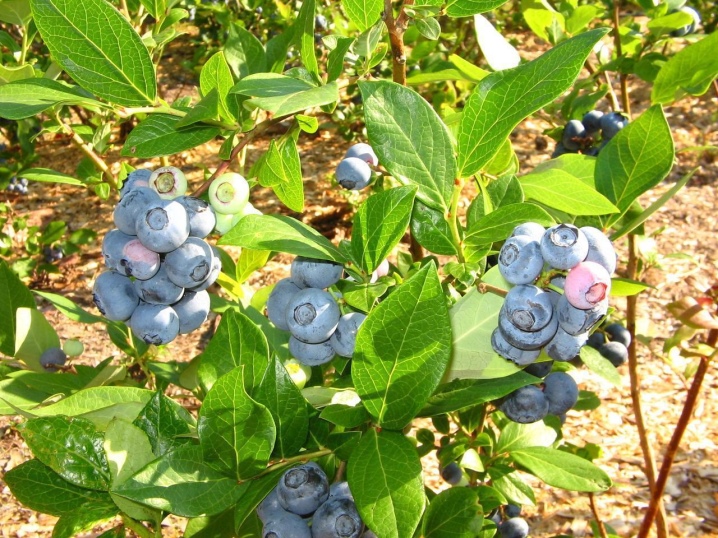
- "Aurora" - a variety of late ripening, regularly brings abundant harvests, especially with cross-pollination on the site. The hybrid is resistant to frost down to -30 degrees and has a long growing season. Bushes grow upright, of medium height (up to 1.4 meters) and spreading. The berries of this variety ripen by autumn and are distinguished by a beautiful light blue color, a bright aroma and a sweet dessert taste.
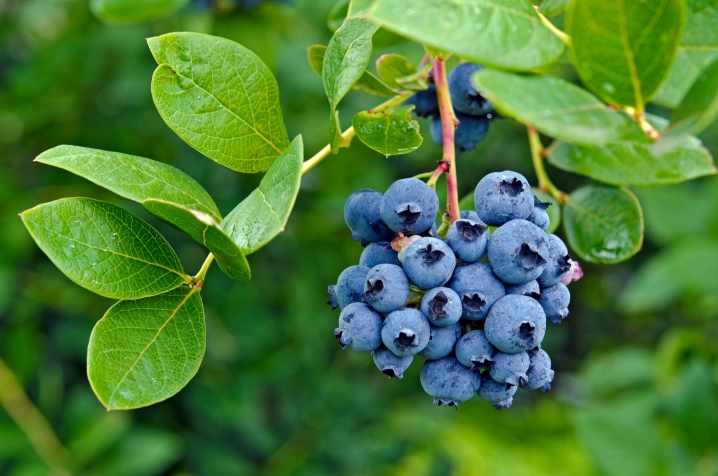
They tolerate transportation well, are used fresh, frozen and processed.
- "Blue Ray" - mid-season hybrid variety, tolerates frosts well down to -25 degrees. Produces fruit over an extended period of time and prefers dry, sunny locations. The fruits ripen in short compressed clusters and are up to 2 cm in diameter. The taste is sweet, aromatic and memorable. The shrub can also be planted as an ornamental plant, which changes the color of the foliage to red at the beginning of autumn.
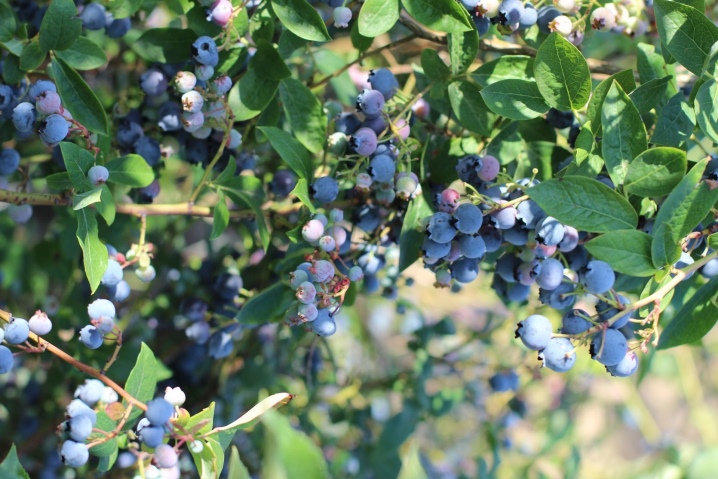
When and where to plant?
Blueberries are very demanding on growing conditions and can simply die if the place and timing of planting, as well as agricultural techniques, are not suitable for them. To create comfortable conditions for the growth of blueberry bushes, bringing large and stable yields, you must first familiarize yourself with the rules for planting and caring for it, so that from the first days of plant life in the garden you do not make irreparable mistakes.

You need to start by choosing high-quality seedlings purchased from reliable producers, in large enterprises for the cultivation of planting material. When purchased, each plant should look healthy and have a well-developed root system.
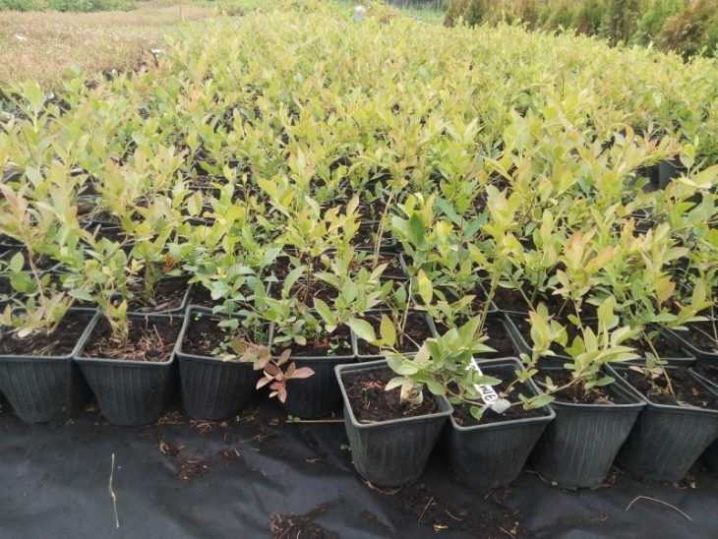
At the same time, you should prepare a place for planting young plants. In natural conditions, blueberries prefer open, sunny places located on elevations. Lack of the required amount of lighting has a detrimental effect on the health and productivity of plants. At the same time, a sufficiently open place, far from tall trees and shadows, should not be blown through by the through wind.
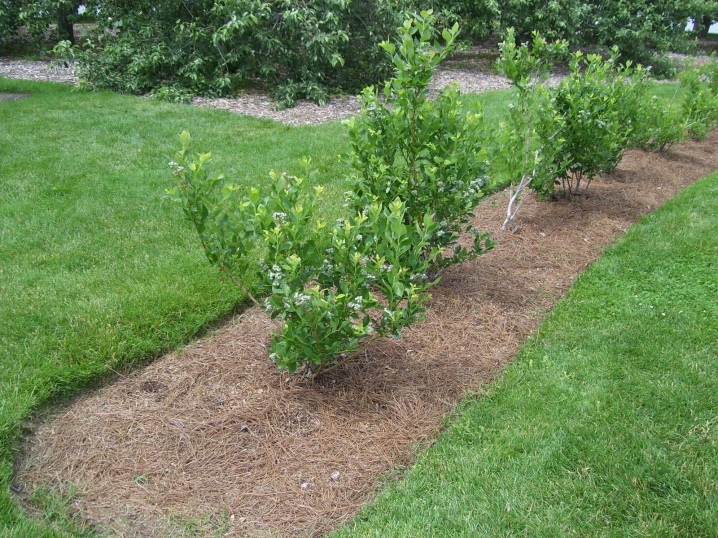
Therefore, on the north side, planting berries should ideally be closed by a building wall or a solid fence.
Another reason for growing garden blueberries away from fruit trees is competition for water intake. The root system of the bushes develops in such a way that the bulk of the roots lies at the surface of the soil. For this reason, the plant is not afraid of excess groundwater, but it may lack moisture from the upper layers of the soil.
Particular attention should be paid to the timing of planting varieties of garden blueberries. With the autumn planting of seedlings of the first harvest, you can wait for the next year. Planted in spring, young plants take root less well and begin bearing fruit from the second year of life in a permanent place. Seedlings with an open root system, planted in autumn, have time to take root before the onset of the winter cold and the subsequent growing season. The time of planting plants in open ground does not really matter if they are with a closed root system.
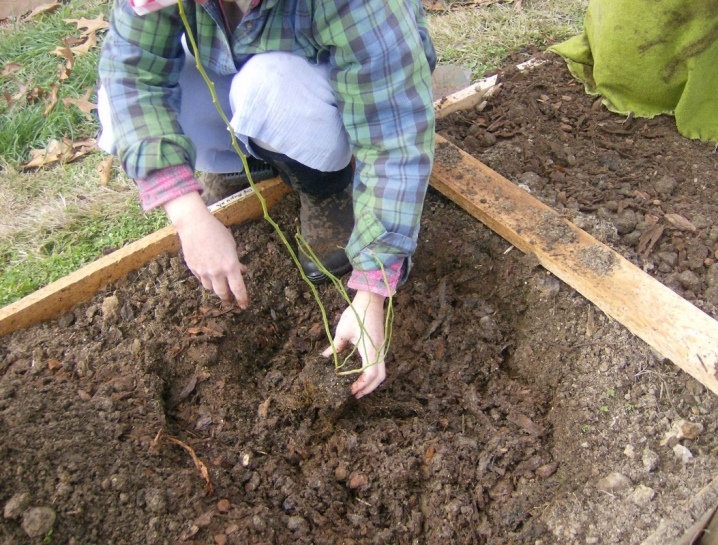
Landing technology
Drought-resistant plants of garden blueberries should be planted in open ground with good drainage qualities, since stagnant water and waterlogging of the upper layers of the earth can lead to disease and death of the bushes. For this reason, the most suitable soil for blueberries in a summer cottage is peat bogs, which are often found in the Moscow region. If the soil consists of clay layers, then the planting site for blueberries must be specially prepared. For this, there are rules that are followed in a specific sequence.
- Dig holes in the ground of a round or square shape, 0.8-0.9 meters in size, to a depth of at least 0.5 meters.
- To get the necessary drainage layer, you need to mix fertile soil with sawdust and bark of coniferous trees, adding chopped twigs and moss.
- Mineral fertilizers need to be applied to the pit, with special emphasis on the content of sulfur and nitrogen.
- To create the necessary acidity of the soil, the optimal value of which for blueberries is 4.5 pH, you can add table vinegar or citric acid solution to the soil for filling. For this purpose, special ready-made mixtures are also used. Due to the increased acidity, the leaves of the seedlings may turn red even before the onset of autumn.
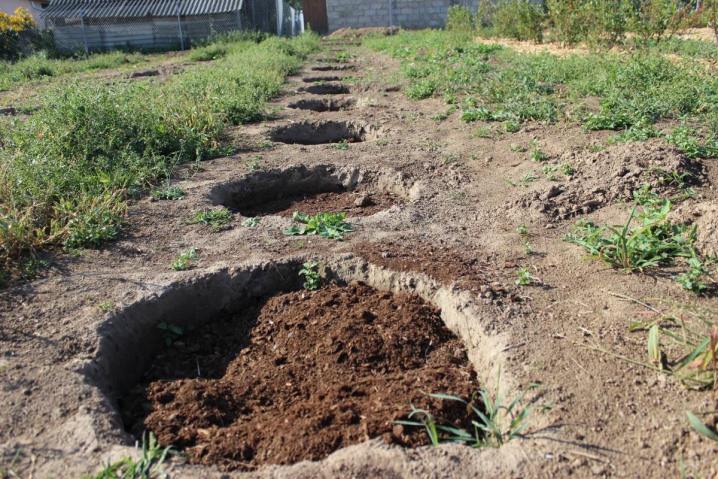
After preparing the pits, it remains to plant the plants correctly, arranging them in rows. The distance between bushes for tall varieties is 1.5 meters, and for low ones - 1 meter. It is necessary to leave aisles up to 2 meters wide between the rows, regardless of the type of varietal blueberry. A plant is installed in the hole, straightening the root system, covered with prepared soil and mulch trunks, abundantly watering the seedlings.
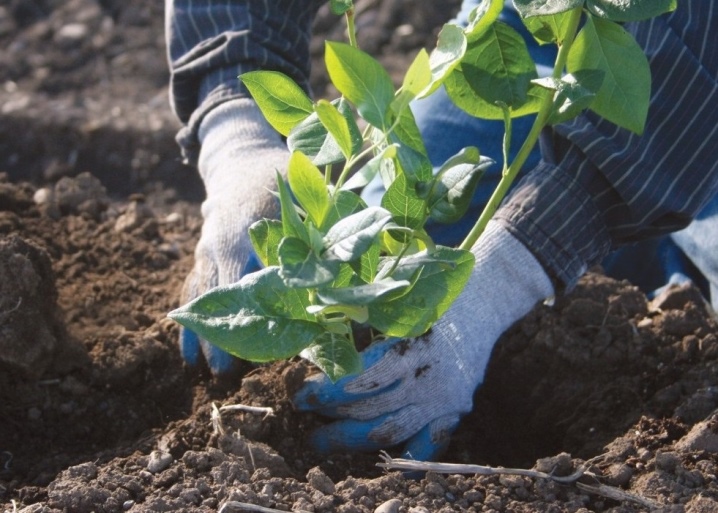
Care
Garden blueberry is considered an unpretentious plant. If the basic planting conditions are met and simple agrotechnical rules are followed, then the plant will delight the owners of the site with tasty and healthy fruits for many years.
Soil moistening
Among the features of growing hybrid varieties of blueberries, watering is of great importance. After planting, it is necessary to apply water for seedlings every 2-3 days, and for adult plants, on average, 2 times a week. In the midst of the summer heat, you need to water the plants often, and at normal times, regularly moisten the soil in the root zone. During particularly dry periods of the summer season, it is helpful to spray the blueberries with clean water before sunset.

Mulching, weeding and loosening
Immediately after planting the seedlings in the spring, mulch the soil around the trunk. To do this, take coniferous sawdust, crushed bark or fallen needles. This mulch material must be rotted. This protection is necessary for roots that are close to the surface of the ground, as it helps to retain moisture in the soil.
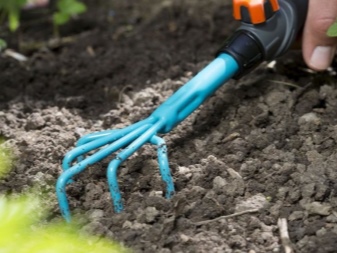
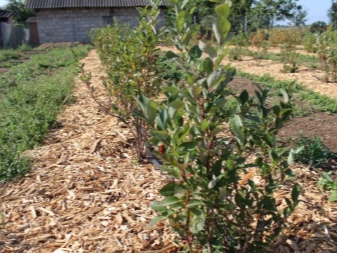
If weeds nevertheless sprout through the layer of mulch, then they must be pulled out regularly, periodically performing careful and shallow loosening so as not to damage the blueberry root system.
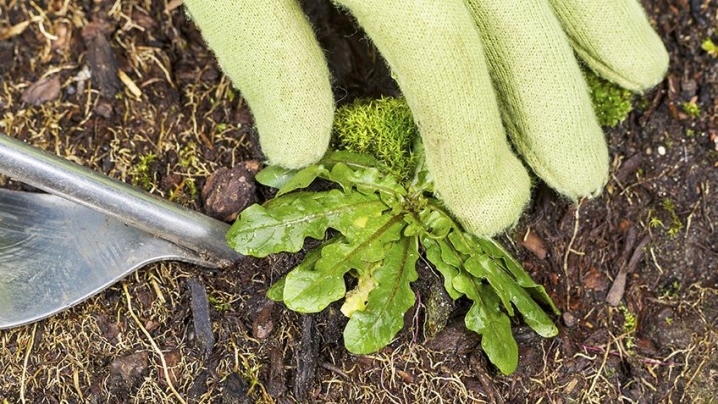
Top dressing and acidification of the soil
The uniqueness of agricultural technology when caring for blueberries lies in the need for regular acidification of the soil around the bushes, in cases where the land on the site has neutral pH values.
Experienced gardeners know that when fighting alkalization of the soil, it is not necessary to purchase chemicals, but you can use the folk secrets of preparing an acidic solution from natural raw materials.
To do this, take acid, rhubarb and sorrel, grind a large bunch of these plants and prepare a kind of compote, which is infused in 10 liters of water for 3 hours. This infusion can be poured over blueberries without diluting it with water. You can also use citric acid or infuse a bucket of water with one crushed lemon.
The first application of fertilizers is usually done 2 weeks after planting the seedlings or cuttings. To do this, put one teaspoon of ammonium sulfate, superphosphate and potassium sulfate on one bucket of water. 1 liter of solution is poured under each bush, and after another 2 weeks, you can water the bushes with diluted organic matter. In the fall, blueberries are fertilized with a phosphorus-potassium composition.

Blueberries are fed 3 times throughout the growing season. In shops for gardeners, special types of mineral fertilizers are sold, where everything is balanced for blueberries, including an acidifying effect. Minerals for this culture can be found in packages under the names Biopon, Planton, Florovit, Target and others. If in the region of residence it is not possible to find fertilizing specifically for blueberries, then compost fertilizer for the azalea plant is similar in composition.
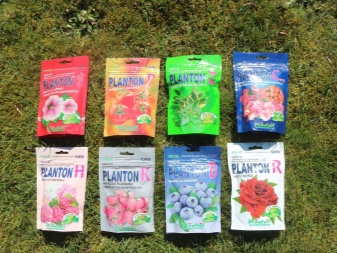

Pruning
For the first time, blueberry bushes are cut immediately after planting, shortening the side shoots. Adult plants are pruned 2 times a year. The main procedure for crown formation is carried out in mid-spring, when frozen, diseased and spent last year's shoots are removed. In autumn, after the completion of fruiting, a preliminary cleaning of the plant from diseased, broken and undeveloped branches is done.
It is recommended to pinch annual shoots that have started to grow strongly, which contributes to their faster ripening. At the age of 5-6 years, garden blueberries undergo general pruning in order to form the crown, which in the future will become the main form of the bush.
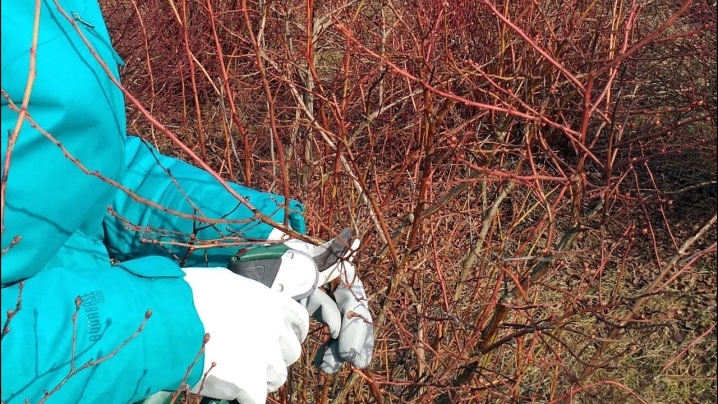
Preparing for winter
Most blueberry varieties endure the harsh winters of the Moscow region with temperatures dropping to -30 degrees. However, it is necessary to take care of garden varieties, prepare them for winter, cover them in case of windy and snowless weather.
To protect the bushes, they put metal arcs along the rows of planting, throwing nonwovens or ordinary burlap on them. Such barriers perform the task of additional shelter and insulation.
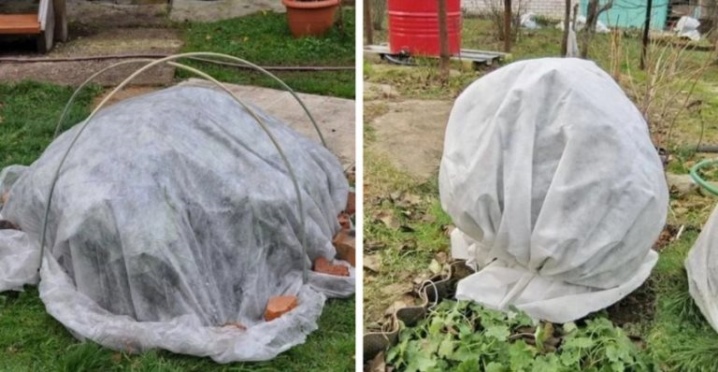
We must not forget that a lack or excess of acidity dramatically reduces the resistance of blueberries to frost, since the roots are in a depressed state.
Diseases and pests
All hybrid varieties of garden blueberries can be sick with the types of bacterial, viral or fungal diseases characteristic of the culture. Gray mold infects plants if they are weakened by excess moisture. In such cases, the treatment will be the device of the drainage system and treatment of the stem with the drug "Eurapen".
Young seedlings sometimes become covered with swollen red spots, which indicates infection with physalosporosis. The only way to combat the disease is to trim the diseased areas of the stem. Signs of moniliosis are expressed in the drooping foliage of the plant, and this disease is treated with the help of the universal drug "Topaz".
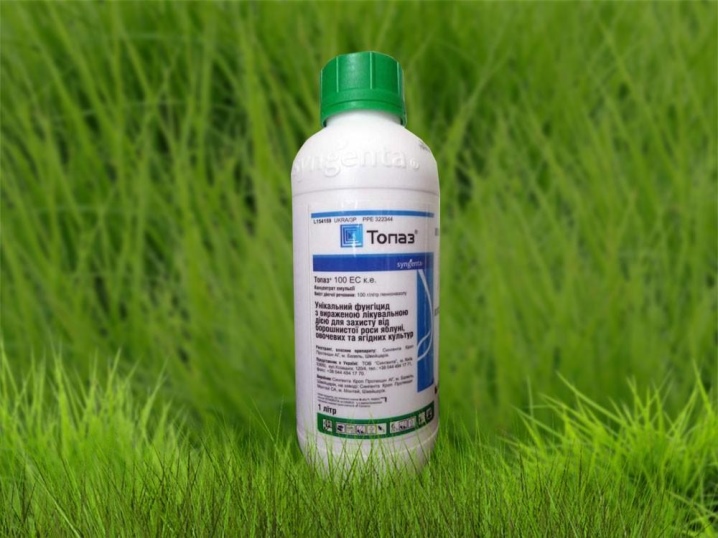
Emerging diseases of garden blueberries are treated by timely spraying the bushes with insecticidal and fungicidal preparations that actively fight against aphids, flower beetles and kidney mites. Preventive treatment with Bordeaux liquid also works well.














The comment was sent successfully.